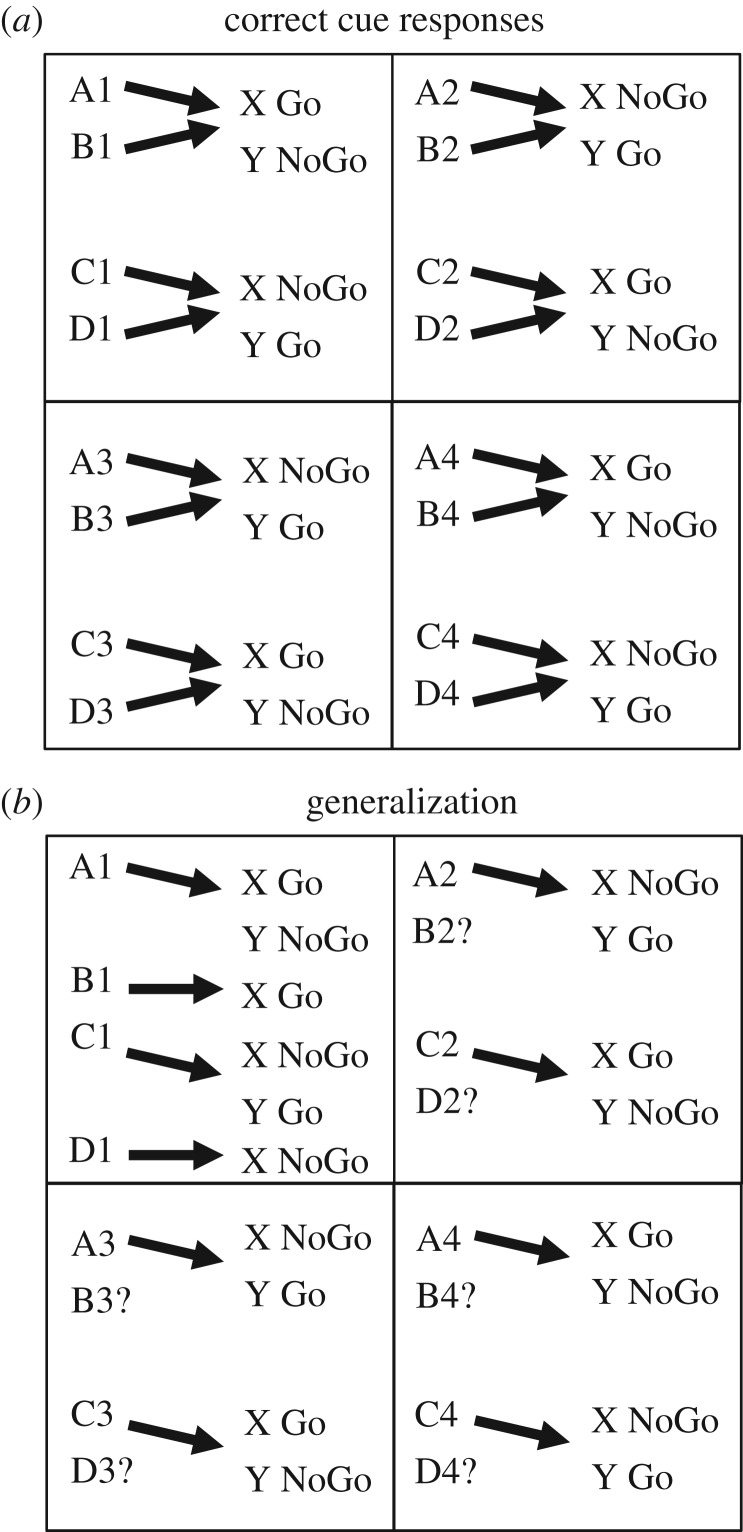Figure 1.
(a) Diagram of the behavioural task. Participants learn associations between four items A,B,C,D and two other items X,Y. The association rules change with spatial quadrant, but pairs of quadrants have the same associations (e.g. 1 and 4, 2 and 3), allowing participants to extract a common higher order rule. For example, item A followed by item X in quadrant 1 requires a Go response to be correct. There are 16 Go pairings and 16 NoGo pairings. (b) Task with probe stimuli testing generalization. The task is the same as A, except that in each quadrant, about half of the cue combinations are not shown during training (indicated by the question mark ‘?’). All examples of A and C are shown, but only a single example for B and D are shown. After training, simulations are presented with the missing cue and have to infer the correct paired associate (X, Y) from experience in the equivalent quadrant.

